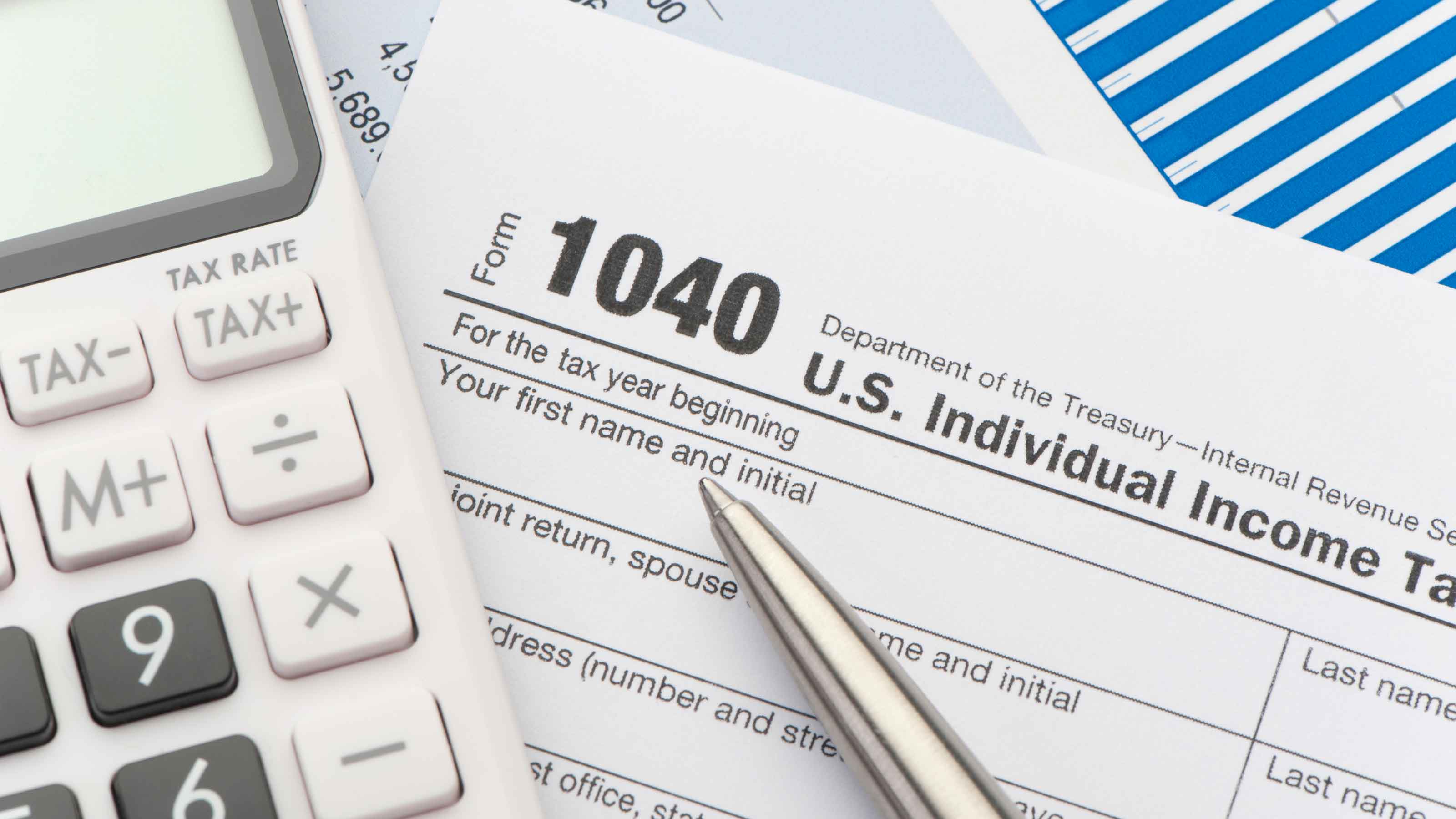Prepare for a New Tax Year
Engage in some midyear planning to take advantage of special tax rules and breaks for 2009.

EDITOR'S NOTE: This article was originally published in the July 2009 issue of Kiplinger's Retirement Report. To subscribe, click here.
With your 2008 tax paperwork safely tucked away in the file cabinet and your refund wisely spent or wisely saved, you may think you deserve a bit of a tax respite. Not so fast. "This is the perfect time to start planning for 2009," says Michael Eisenberg, a certified public accountant in Los Angeles.
If you don't pay attention now, you may miss out on new tax breaks for buying a new car or making energy-saving home improvements. Thinking of converting to a Roth IRA? You should start laying the groundwork. And older IRA account holders who are benefiting from the one-year waiver of the required-minimum-distribution rule can employ some tax-saving moves.

Sign up for Kiplinger’s Free E-Newsletters
Profit and prosper with the best of expert advice on investing, taxes, retirement, personal finance and more - straight to your e-mail.
Profit and prosper with the best of expert advice - straight to your e-mail.
Your first task: Check the bottom line of your 2008 tax return to see if you need to change your tax withholding or estimated tax payments. Nearly 100 million taxpayers got refunds this year, averaging $2,700. If you were among them, why not get that extra $225 a month in your paycheck starting next month instead of a refund next spring? All you have to do is file a new W-4 form with your employer to adjust the number of allowances you claim. Each allowance for 2009 basically makes $3,650 of your annual income off-limits for income-tax withholding. Claiming extra allowances will automatically increase your take-home pay.
To give you an idea of how much you can gain, we've updated our tax-withholding calculator. Answer three questions -- you'll find the answers on your 2008 tax return -- and the calculator will give you a solid idea of how many more allowances you should claim. You can also look at IRS Publication 919, How Do I Adjust My Tax Withholding?
If you make estimated tax payments, don't assume you need to make the same quarterly payments in 2009 as you did last year. If you had to beef up payments last year to cover the bill on a big capital gain or fat bonus, cut back this year unless you expect a repeat of your good fortune.
Watching withholding and estimated tax payments is particularly important this year because of the Making Work Pay tax credit, which will show up on 2009 returns. The credit is worth 6.2% of earned income, up to the top credit of $400 for individuals and $800 for joint filers. (It phases out at higher income levels.)
The government has already adjusted withholding tables, so you're probably getting extra money in your paychecks. But you may be bringing home too much. If you hold two part-time jobs, each employer will reduce your withholding so you'll get the value of two credits. And pensioners, who are not eligible for the credit, may be getting less tax withheld than they should. "In these cases, you'll want to have more withheld or pay more in estimated taxes," says Bob Scharin, senior tax analyst for Thomson Reuters, a business information group. (You can adjust the withholding on your pension by filing a revised Form W-4P.)
Those receiving unemployment compensation should plan for the tax tab. Although jobless pay is usually subject to federal income tax, for 2009 the first $2,400 is tax-free.
Deal on wheels. Buyers of new vehicles this year can deduct the state and local sales taxes on the purchase, whether or not they itemize deductions. This break applies to new cars, motor homes, light trucks and motorcycles purchased after February 16, 2009, and before January 1, 2010. Sales tax paid on the first $49,500 of cost qualifies. This break phases out for taxpayers with modified adjusted gross income between $250,000 and $260,000 for joint filers and between $125,000 and $135,000 for single filers.
Itemizers who deduct state sales taxes instead of state income taxes get no benefit from this change because they already claim the sales tax on an auto. Itemizers who deduct state income taxes will get a separate deduction for auto sales taxes; nonitemizers will add the sales tax amount to their standard deduction. A special break will apply in states without a sales tax.
The $49,500 applies to each car you buy. So if you purchase two cars for $30,000 each, assuming a 4% sales tax, your deduction would be $2,400.
Cut energy -- and your tax bill. This could be the year to reduce your carbon footprint. Congress raised the energy tax credit for homeowners who make energy improvements to their homes. Homeowners can receive a credit of 30% of what they spend for qualifying improvements in 2009 and 2010, up to a total credit of $1,500 over the two years. It applies to insulation, skylights, windows, outside doors, and high-efficiency furnaces, water heaters and central air conditioners. The 30% credit drops to 10% after 2010.
There is also a credit to help homeowners pay for alternative energy equipment. The credit is equal to 30% of the cost of installing solar water-heating equipment, solar electric equipment, geothermal heat pumps or small wind turbines in your primary residence or a second home -- with no dollar limit.
‘New’ home credit for older home buyers. Perhaps you lived overseas or moved into a rental unit to try out a retirement community for a few years. If you sold your house more than three years ago and are thinking of buying a new home, Congress offers some incentives to purchase now.
[page break]
Buyers of a primary residence before December 1 can qualify for a tax credit of 10% of the purchase price, up to $8,000. The credit is designed for first-time home buyers, but you can qualify if you have not owned a residence in the U.S. in the previous three years. The credit phases out between $150,000 and $170,000 of modified AGI for joint filers and $75,000 to $95,000 for single filers. You will have to repay the credit if you sell the house within 36 months of the date you bought it.
Ready, set, Roth. If you want to convert your traditional IRA to a Roth IRA, your modified adjusted gross income can't exceed $100,000, whether you are single or married. But starting in 2010, the ceiling disappears. And taxpayers who convert in 2010 can pay half the tax in 2012 with their 2011 return and pay the balance in 2013 when they file their 2012 forms.
IRA owners considering a conversion will see a silver lining if their IRA balances have been battered by the market meltdown, says Robert Seltzer, a certified public accountant in Beverly Hills, Cal. "They are paying the tax on a depressed asset value," he says, "and they have two years to spread their taxes out."
If you're planning to switch part or all of your traditional IRA to a Roth next year, now's the time to start planning for how you'll pay the tax tab. It is best to use non-IRA money so you can maximize the amount that can grow in your new Roth for your retirement or to leave tax-free to your heirs.
The 0% capital-gains rate. For the second year, taxpayers in the 10% and 15% brackets -- and that's for couples with taxable incomes of up to $67,900 and individuals with incomes of up to $35,950 -- enjoy a 0% tax rate on long-term capital gains. This break ends after the 2010 tax year.
Some advisers are mistakenly telling lower-bracket clients that they can avoid capital-gains taxes on any size profit, says John Roth, senior federal tax analyst for CCH, a provider of tax information. But, he says, "Just because you're in the 10% bracket doesn't mean that all of your capital gains will escape taxation."
The 0% rate only applies to gains that fall in the 10% and 15% brackets. Let's say you're married and your taxable income for 2009 is $50,000. You sell stock for a $30,000 profit. The first $17,900 (the amount that takes you to the top of the 15% bracket) would be tax-free; the $12,100 balance would be hit with the 15% capital-gains tax—for a tax bill of $1,815.
You can make moves now to keep your taxable income in the lower brackets, perhaps by boosting charitable donations. "Any itemized deduction reduces your taxable income and increases the amount of gain that can benefit from the 0% rate," says Scharin, of Thomson Reuters.
Make your IRA contribution soon. Instead of waiting until the deadline of April 15, 2010, consider making your 2009 IRA contribution now. "It will accrue more interest, and the compounding effect will put more money in your pocket over time," says Roth. Also, deductible contributions to IRAs and other retirement plans will reduce your taxable income.
For 2009, you can contribute up to $5,000 (an extra $1,000 for those 50 and older). If you have any self-employed income, consider making contributions to a simplified employee pension (SEP) or solo 401(k) throughout the year, too.
Your IRA could also come into play as you plan your charitable contributions for the rest of the year. Congress has extended a break through 2009 that allows those who are 70 1/2 and older to transfer up to $100,000 a year directly to charity without paying tax on the withdrawal. This is particularly valuable to taxpayers who don't itemize deductions and thus get no tax benefit from their charitable gifts. Avoiding tax on the IRA payout by having the money go directly to charity cuts your tax bill the same way a deduction would.
Let's say you're a nonitemizer in the 25% tax bracket who would like to give $10,000 to charity. If you withdraw the money from your IRA and then give the money to a worthy cause, you'd pay $2,500 in income tax and get no benefit for the charitable contribution. With a direct transfer, you skip the tax bill.
Strategies for the non-RMD year. If you're 70 1/2 or older, Congress has a deal for you: a waiver of required minimum distributions from retirement plans. If you don't need the money or only need a bit, you can give your savings more tax-deferred time to grow.
Skipping the distribution could also put you in a lower tax bracket. If you can drop to the 10% or 15% tax bracket, you could be eligible for the 0% capital-gains tax rate. Forgoing a withdrawal could also enable you to make other tax-generating moves, such as exercising stock options or selling assets at a gain, without being pushed into a higher tax bracket.
For more authoritative guidance on retirement investing, slashing taxes and getting the best health care, click here for a FREE sample issue of Kiplinger's Retirement Report.
Get Kiplinger Today newsletter — free
Profit and prosper with the best of Kiplinger's advice on investing, taxes, retirement, personal finance and much more. Delivered daily. Enter your email in the box and click Sign Me Up.

-
 Stock Market Today: Stocks Gain on Tech, Auto Tariff Talk
Stock Market Today: Stocks Gain on Tech, Auto Tariff TalkThe Trump administration said late Friday that it will temporarily halt tariffs on some Chinese tech imports.
By Karee Venema
-
 Sam's Club Plans Aggressive Expansion: Discover Its New Locations
Sam's Club Plans Aggressive Expansion: Discover Its New LocationsSam's Club expansion plans will open up to 15 new stores each year. Learn where they plan to open in 2025.
By Sean Jackson
-
 Kiplinger's Tax Map for Middle-Class Families: About Our Methodology
Kiplinger's Tax Map for Middle-Class Families: About Our Methodologystate tax The research behind our judgments.
By David Muhlbaum
-
 Retirees, Make These Midyear Moves to Cut Next Year's Tax Bill
Retirees, Make These Midyear Moves to Cut Next Year's Tax BillTax Breaks Save money next April by making these six hot-as-July tax moves.
By Rocky Mengle
-
 Estimated Payments or Withholding in Retirement? Here's Some Guidance
Estimated Payments or Withholding in Retirement? Here's Some GuidanceBudgeting You generally must pay taxes throughout the year on your retirement income. But it isn't always clear whether withholding or estimated tax payments is the best way to pay.
By Rocky Mengle
-
 How to Cut Your 2021 Tax Bill
How to Cut Your 2021 Tax BillTax Breaks Our guidance could help you claim a higher refund or reduce the amount you owe.
By Sandra Block
-
 Why This Tax Filing Season Could Be Ugly
Why This Tax Filing Season Could Be UglyCoronavirus and Your Money National Taxpayer Advocate Erin M. Collins warns the agency will continue to struggle with tight budgets and backlogs. Her advice: File electronically!
By Sandra Block
-
 Con Artists Target People Who Owe The IRS Money
Con Artists Target People Who Owe The IRS MoneyScams In one scheme, thieves will offer to "help" you pay back taxes, only to leave you on the hook for expensive fees in addition to the taxes.
By Rivan V. Stinson
-
 Cash-Rich States Lower Taxes
Cash-Rich States Lower TaxesTax Breaks The economic turnaround sparked a wave of cuts in state tax rates. But some say the efforts could backfire.
By Sandra Block
-
 The Financial Effects of Losing a Spouse
The Financial Effects of Losing a SpouseFinancial Planning Even amid grief, it's important to reassess your finances. With the loss of your spouse's income, you may find yourself in a lower tax bracket or that you qualify for new deductions or credits.
By Rocky Mengle